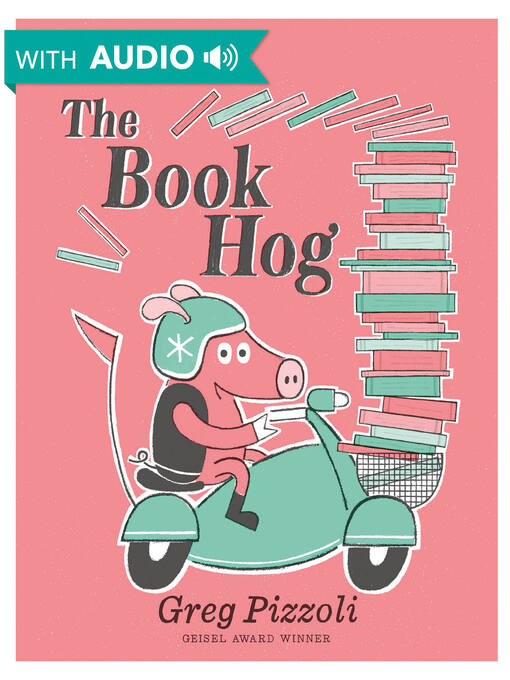
Many of the sentences are only a few words long (though some, particularly in the middle of the book, are more complex, with one reaching 22 words in length), and sentence breaks are never carried over a page turn (though a couple of new sentences do begin with "and" or "but").

There are some instances of hand-lettered text appearing in the illustrations, but it's never integral to the story. It has a nice, large font, which always appears on a solid background. This picture books has several elements that will be useful to the beginning reader, but also some challenging areas. With time and some help from the librarian, he eventually learns to read, so he can appreciate his books for the stories they contain. One day, he wanders into a library and is invited to join a storytime program. (Mar.The Book Hog loves books, but he can't actually read them. Who hasn’t seen-or been-that kid? Ages 3–5.

And, as always in a Pizzoli book, there are wonderful details: readers will note that the markings on spines of the books go from fuzzy lines to actual titles when the Book Hog learns to read, and that in one spread, he raptly stands right by the librarian’s chair, clutching its arm as she reads aloud to the group. Pizzoli once again employs a candy-colored palette and an ebullient cast-the pink-and-green look, and even some of the characters, are reminiscent of his The Watermelon Seed. He had never learned.” Then Book Hog discovers the library (“he smelled some books inside”) and a whole community of book lovers, including a kind librarian whose attentiveness and story times inspire him-“over time, and with practice”-to become a reader. Book Hog has a big secret: “He didn’t know how to read. But reading procrastination is not his problem.


He especially liked the ones with pictures”). Pizzoli’s porcine protagonist certainly accumulates books-he’s a relentless buyer and forager-and he adores each volume (“He loved the way they smelled, and the way the pages felt in his hooves. The Japanese word tsundoku describes books that have piled up in a home without being read.


 0 kommentar(er)
0 kommentar(er)
